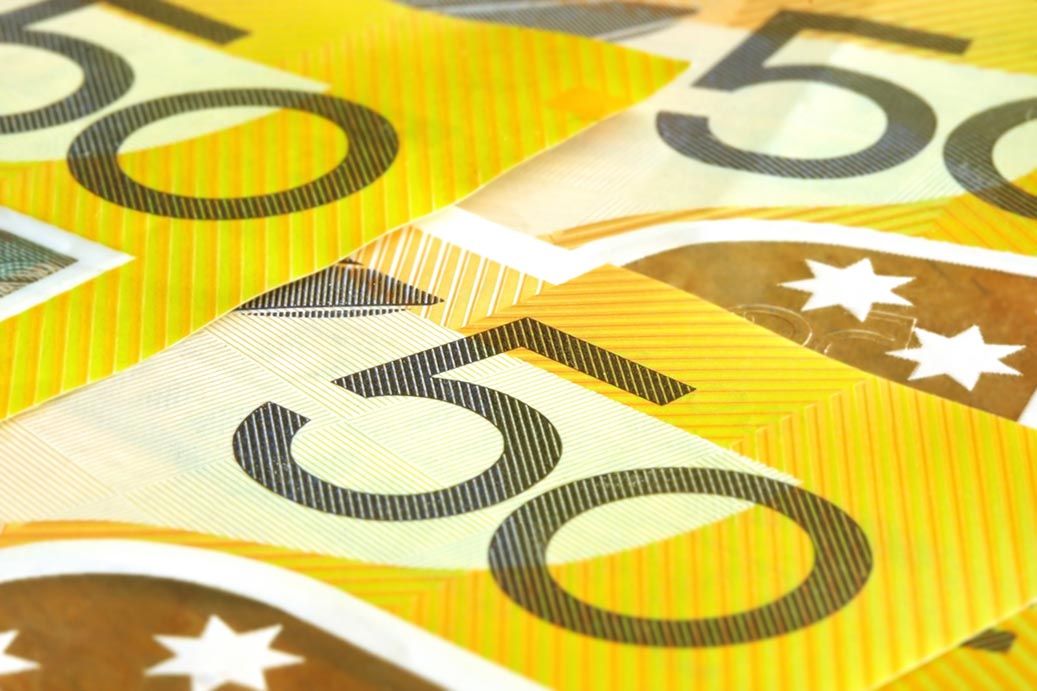Australian Dollar Put on Notice for Further Downside
- Written by: Gary Howes
-
- Chinese data misses aids to AUD's woes
- Come just a day after RBA tongue lashing
- Near-term technical relief possible

Image © Adobe Images
- GBP/AUD reference rates at publication:
- Spot: 1.8870
- Bank transfer rates (indicative guide): 1.8210-1.8342
- Money transfer specialist rates (indicative): 1.8700-1.8776
- More information on securing specialist rates, here
- Set up an exchange rate alert, here
Unhappy global equity markets, disappointing data out of China and a hostile reserve bank make for a soggy outlook for the Australian Dollar.
The Aussie retained a heavy feel heading through midweek trade with one analyst we follow saying further declines are being signalled by both technical and fundamental developments.
"A risk-sensitive Australian dollar could be heading for a deeper drop if equity market corrections become more entrenched and China's recovery falters," says Peter Stoneham, a Reuters market analyst.
Global markets extend a losing streak that is entering its second week, an unsupportive backdrop for the 'high beta' Australian Dollar which tends to track equity indices lower.
"In a risk-off world, AUD, CAD, NZD are all weaker and AUD is the most vulnerable of the three. EUR is likely to outperform GBP, SEK, NOK and other risk-sensitive currencies in its time zone," says Kit Juckes, head of FX research at Société Générale.
A slew of negative economic statistics out of China midweek reinforce a narrative of slowing growth in the world's second largest economy which serves as Australia's prime export market.
Retail Sales fell 2.5% in the year to August, a substantial slowdown on the 8.5% recorded in July and well below analyst expectations for a reading of 7.0%.
Industrial production meanwhile slipped to 5.3% in the year to August from 6.4% in the year to July, presenting investors another miss on expectations for a reading of 5.8%.
"The COVID-19 Delta variant hit multiple provinces in China over the course of about a month during July-August, triggering stringent containment measures and causing significant disruptions to economic activity, especially in the services sector," says Hunter Chan, Economist, Greater China at Standard Chartered.
{wbamp-hide start}
{wbamp-hide end}{wbamp-show start}{wbamp-show end}
"Heavy rainfall and flooding added to the damage," he says.
Standard Chartered warn of moderate downside risks to their annual growth forecast for China of 8.8%.
"The latest COVID resurgence in Fujian province from 10 September suggests sporadic outbreaks are becoming the new normal," says Chan.
The Australian Dollar was already the worst performing major currency in the 24 hours leading into the Chinese data release thanks to a speech by Reserve Bank of Australia (RBA) Governor Philip Lowe on Tuesday.
Lowe said the conditions for higher rates in Australia were still some way off, disappointing a market that has built expectations for a 2022 rate rise.
"These expectations are difficult to reconcile with the picture I just outlined and I find it difficult to understand why rate rises are being priced in next year or early 2023," said Lowe in a speech.
He maintained a view that lift-off for Australian interest rates was only likely in 2024 as it would take months for wage growth to sustain levels around 3.0%, forcing a market recalibration that involved a softening in the AUD's value.
The RBA has turned more cautious on the economy and delayed its exit from quantitative easing in September in response to rising Covid cases in Australia, a reminder that the Aussie Dollar is facing pressures both externally (Chinese growth) and domestically.
"The AUD peaked earlier this month as the Delta coronavirus variant threatened Australia's economic recovery and forced the Reserve Bank of Australia to adopt a more cautious stance," says Stoneham.
Beyond the fundamentals, technicals also suggest the path of least resistance for the Aussie Dollar is lower, although some near-term relief cannot be discounted.
"Technicals might offer the AUD a stay of execution, as a modest rebound from Wednesday's 0.7302 low preserves a key support level. A 50% Fibonacci retracement (0.7107-0.7477) and potential trigger point sits at 0.7292," says Stoneham.
Image courtesy of Reuters.
"However, unless another, more major Fibonacci level to the topside is breached, the outlook still favours further AUD weakness," says Stoneham.
The below shows a general inverse relationship between AUD/USD and GBP/AUD, suggesting the latter takes a fair degree direction from the larger pairing:
Any support for the AUD/USD at the area identified by Stoneham could correlate with resistance for recent GBP/AUD ascent in the nearby vicinity.
However, should the broader thrust in AUD/USD be lower, a return to the August high in GBP/AUD at 1.9154 cannot be ruled out.
At the time of writing the Australian-to-U.S. Dollar exchange rate is quoted at 0.7327 and the Pound-to-Australian Dollar exchange rate at 1.8868.













